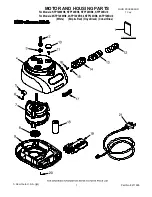
Signal Generator Settings
R&S
®
SGT100A
237
User Manual 1176.8674.02 ─ 07
enable the R&S
SGT to receive these values, trigger the
tion.
In the two automatic ways, the R&S
SGT adjusts the corresponding input fields with
the measured/received values. The internal gain control mechanism uses these
received values to adjust the input signal gain to achieve an optimal dynamic range.
Sample rate
●
External input signals with sample rates different than the system clock are resam-
pled, as shown in
.
Figure 7-30: Resampling of external digital baseband signals
The R&S
SGT can process digital signals with sample rate from 400 Hz to 200
MHz, whereas the internal signal processing is based on a sample rate with 300
MHz.
●
Estimating or defining the sample rate
The sample rate of the signal at the digital interface can be determined with one of
the following methods:
–
User-defined sample rate
Provide both the external signal source and the receiving instrument with a
common external reference signal and set the sample rate value.
–
Estimated sample rate
Enable the instrument to evaluate the received I/Q data clock
Maximum modulation bandwidth
●
A baseband signal with a sample rate that is smaller than the used system clock is
interpolated (see
). The resulting modulation bandwidth is calculated as
Sample Rate * 0.8
, i.e. with a sample rate of exactly 200 MHz, the modulation
bandwidth is 160 MHz.
7.9.2 BB Input Block
The settings for signal routing, frequency offset and phase offset are available in the
"BB Input" function block.
The external baseband signal is activated by switching on in the "Baseband Input Set-
tings" dialog as well as by ticking the checkbox of the "BB Input" function block.
External Baseband Signal - Baseband Input
















































